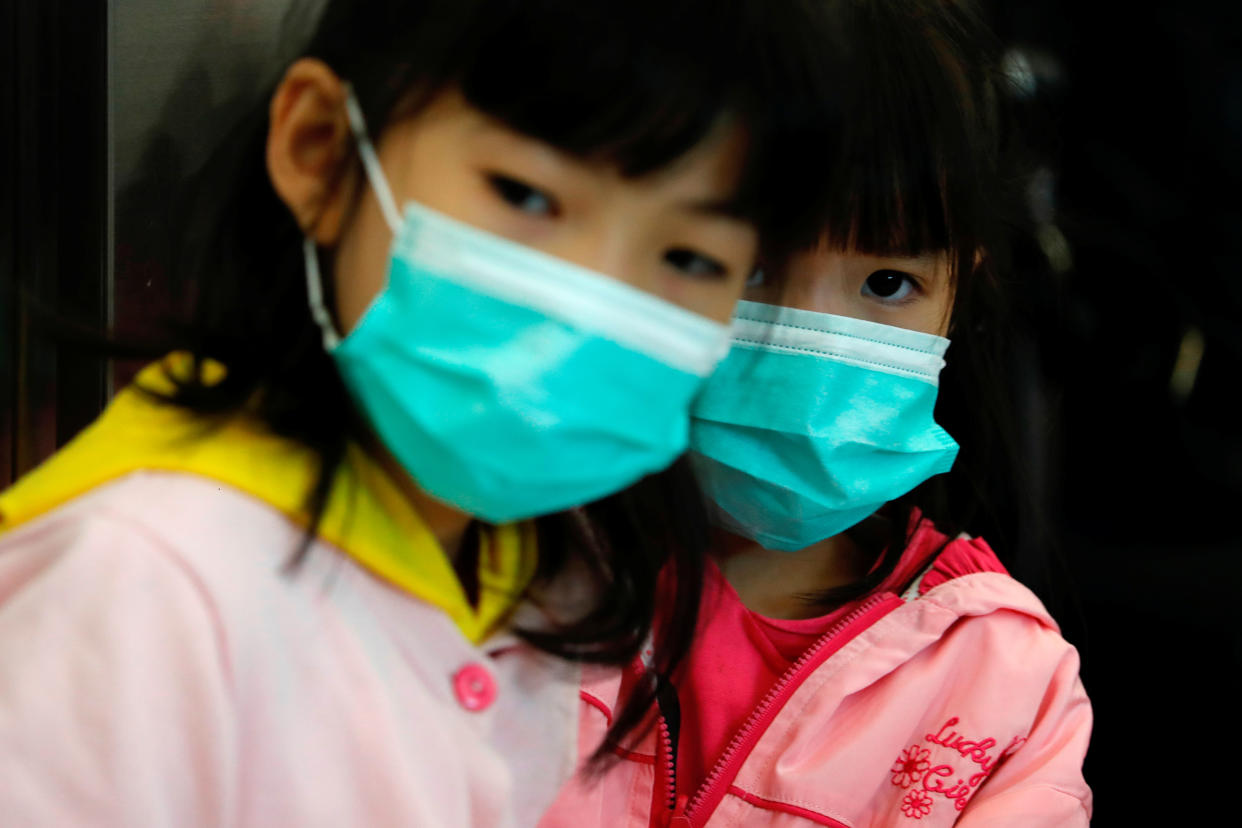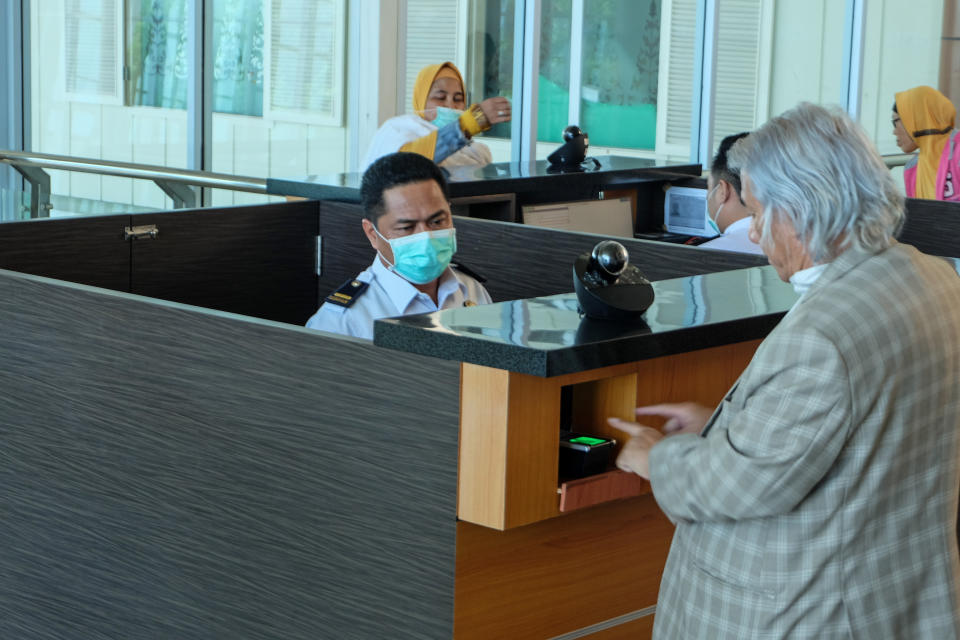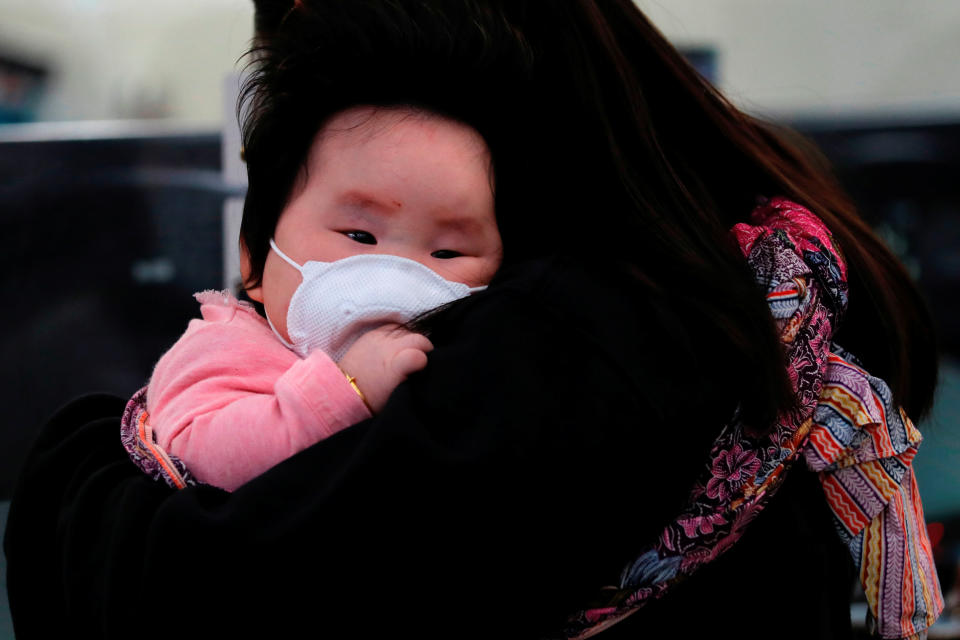World Health Organization will not make the coronavirus outbreak a 'global health emergency': what does this mean?

The World Health Organization (WHO) has not declared China’s deadly coronavirus outbreak a “public health emergency of international concern”.
Deaths from the new virus hit 18 on Thursday in Wuhan, the capital of Hubei province, which is the epicentre of the outbreak.
Hundreds of cases have been confirmed both in China and abroad, with the infection reaching the US earlier this week.
Making the announcement on Twitter, the WHO said it is “too early to declare a public health emergency of international concern given its restrictive and binary nature”.
READ MORE: Billions of journeys to celebrate Chinese New Year raise fears coronavirus will spread worldwide
Only five conditions have ever been declared a public health emergency, the highest alarm the WHO can sound.
These include the Zika virus and Ebola, which killed more than 13,000 people across two outbreaks.
The previously unknown coronavirus strain triggers flu-like symptoms, including breathlessness and fever. In the most severe cases, victims succumb to pneumonia.

“I am not declaring a public health emergency of international concern (PHEIC) today,” Dr Tedros Adhanom Ghebreyesus, director-general of the WHO, said.
“Make no mistake. This is an emergency in China, but it has not yet become a global health emergency.”
Dr Adhanom Ghebreyesus added that while 584 cases, and 17 deaths, have been reported to the WHO, others are suspected and under investigation.
“We know that this virus can cause severe disease, and that it can kill, although for most people it causes milder symptoms,” he said.
“We know that among those infected, one quarter of patients have experienced severe disease.
“We know that most of those who have died had underlying health conditions such as hypertension, diabetes or cardiovascular disease that weakened their immune systems.
“We know that there is human-to-human transmission in China, but for now it appears limited to family groups & health workers caring for infected patients.
“At this time, there is no evidence of human-to-human transmission outside China, but that doesn’t mean it won’t happen.”
READ MORE: How did China's coronavirus outbreak start?
Dr Adhanom Ghebreyesus added there is “a lot we don’t know” about the virus’ source, transmission and symptoms.
“For the moment, WHO does not recommend any broader restrictions on travel or trade,” he said.
“I wish to reiterate that the fact I am not declaring a PHEIC today should not be taken as a sign that WHO does not think the situation is serious, or that we are not taking it seriously.
“Nothing could be further from the truth.
“WHO is following this outbreak every minute of every day, at country, regional & global level.”
The WHO’s international multidisciplinary mission will “review and support efforts” to uncover the animal source of the outbreak, the extent of transmission and screening efforts.
READ MORE: Coronavirus outbreak: your questions answered
Dr Adam Kamradt-Scott, from the University of Sydney, said: “Based on the information we have to date, the WHO director-general’s decision to not declare a public health emergency of international concern is not especially surprising.
“While we have seen international spread of the virus, which is one of the criteria for declaring a PHEIC, the cases in those countries do not appear to have seeded further local outbreaks.
“If that was to start to occur, it would constitute a greater concern but at the moment the outbreak is largely contained within China.
“For the moment, the fact the international community is already on high alert and many countries have put in place surveillance measures may help slow international spread.”
Others, however, questioned the WHO’s decision.
“I'm personally surprised that a PHEIC hasn't been called given that the [virus] appears similar to SARS, we have 4th generation spread and the proportion of severe cases appears high,” Dr Stephen Griffin, from the University of Leeds, said.
“My hope is that this is not a decision that we might come to regret.”
How deadly is the new coronavirus?
While confirmed cases are in the hundreds, Wuhan is thought to have 4,000 cases, with estimations reaching as high as 9,700, Yahoo UK reported.
China's National Health Commission announced today the youngest victim was 48 and the eldest 89.
Most were elderly and suffering other health issues, like Parkinson’s or diabetes.
Based on existing data, the virus is thought to have a 2% death rate, on par with Spanish flu, Yahoo UK reported.
Of those in hospital, between 15% and 20% of cases are severe, defined as needing ventilation.
The WHO was due to make the “emergency decision” on Wednesday, but postponed it, claiming more information was required.
What does a public health emergency mean?
A “Public Health Emergency of International Concern” is defined as a “an extraordinary event” that “constitutes a public health risk through the international spread of disease”.
It also “potentially requires a coordinated international response” to stem the spread of infection.
Under the International Health Regulations act of 2005, all 196 countries who are member states of the WHO are legally bound to help control the disease.
By definition, the health scare is “serious, unusual or unexpected”, “carries implications for public health beyond the affected state’s border” and “may require international action”.
READ MORE: China's coronavirus could have same death rate as Spanish flu pandemic that killed 50m people
A declaration is made by the WHO’s director-general, who is advised by its emergency committee.
The committee is made up of experts in disease control, viruses, vaccine development and how infections spread.
It gives “temporary recommendations” on the health measures required to prevent or reduce the disease spreading internationally, while “avoiding unnecessary interference with trade and travel”.
Recommendations automatically expire after three months.
The committee therefore meets at least every 12 weeks to assess the situation and review whether new temporary recommendations are required or the declaration can be terminated.
What measures have been introduced so far?
Two Chinese cities have gone into “lockdown” in an attempt to stop the infection spreading.
Authorities suspended planes and trains both in and out of Wuhan, which has a population of 11 million.
Outbound flights have been cancelled. Regional airlines, including Malaysia's AirAsia and Singapore Airlines' budget carrier Scoot, are temporarily halting journeys to the city.
Within Wuhan, buses, subways and ferries are also on hold.
Similar measures will come into play in the nearby city Huanggang, which has more than seven million residents, at midnight.
Locals are reportedly being told to avoid crowds and wear masks when out and about.
Libraries, museums and theatres are also cancelling exhibitions, while cafés and cinemas are temporarily closed.
In response to the US case, President Donald Trump said the situation was “totally under control” and he trusted the information coming from Chinese authorities.
Countries around the world are screening travellers for signs of the infection.
Critics argue, however, it can take up to five days for the tell-tale fever to develop, allowing infected passengers to be missed, Yahoo UK reported.

What other infections were ‘public health emergencies’?
The swine flu pandemic of 2009 was the first public health emergency.
It is now known to have killed around 284,500 people around the world, about 15 times more than confirmed at the time, Reuters reported.
This was followed by the Ebola outbreak in the west African countries Sierra Leone, Guinea and Liberia.
Between 2013 and 2016, at least 11,300 people died.
In 2014, the WHO declared the resurgence of polio a public health emergency.
Pakistan made up more than a fifth of global cases, rising from 58 in 2012 to 93 the following year.
READ MORE: China's coronavirus 'may be missed at airport screenings in newly infected travellers'
Zika, which causes babies to be born with abnormally small heads, was declared a public health emergency in 2016.
Starting in Brazil the year before, it spread to more than 60 countries and territories.
By the time the emergency was announced, around 2,300 babies had been born with the tell-tale microcephaly, which can lead to developmental problems.
Ebola was once again declared a public emergency when it struck the Democratic Republic of Congo in July last year.
By 14 January 2019, 3,406 cases had arisen, including 2,236 deaths.
What is the new coronavirus?
Coronaviruses are a class of viruses that cause everything from the common cold to the severe acute respiratory syndrome (Sars) epidemic.
The new strain, 2019-nCoV, likely originated at a live animal and seafood market in Wuhan that “conducted illegal transactions of wild animals”, the BBC reported.
Constantly evolving viruses can make the “jump” over to humans.
Most of those who initially fell ill worked at, or visited, the market.
China's National Health Commission confirmed the virus can spread person-to-person, via sneezing, coughing or shaking contaminated hands.
Cases have arisen beyond Wuhan in major cities like Beijing and Shanghai, as well as Japan, South Korea, Thailand and Taiwan.
Fatal pneumonia comes about when a respiratory infection causes the alveoli (air sacs) in the lungs to become inflamed and filled with fluid or pus, according to the American Lung Association.
The lungs then struggle to draw in air, resulting in reduced oxygen in the bloodstream.
“Without treatment the end is inevitable,” said the charity Médecins Sans Frontières.
“Deaths occurs because of asphyxiation.”
Fellow coronavirus Sars made headlines in the early 2000s after 774 people died across dozens of countries, mainly in Asia.
Genetic analyses reveal 2019-nCoV is more closely related to Sars than any other virus within that class.
The US Centers for Disease Control and Prevention (CDC) has warned there is no specific treatment for coronaviruses.
If the infection triggers pneumonia, doctors work to combat the complication.
When a virus is to blame – like 2019-nCoV – pneumonia may be treated via “antiviral medication”, according to the American Lung Association.
Professor Peter Horby from the University of Oxford claims, however, there is “no effective anti-viral”, with treatment being “supportive”.


